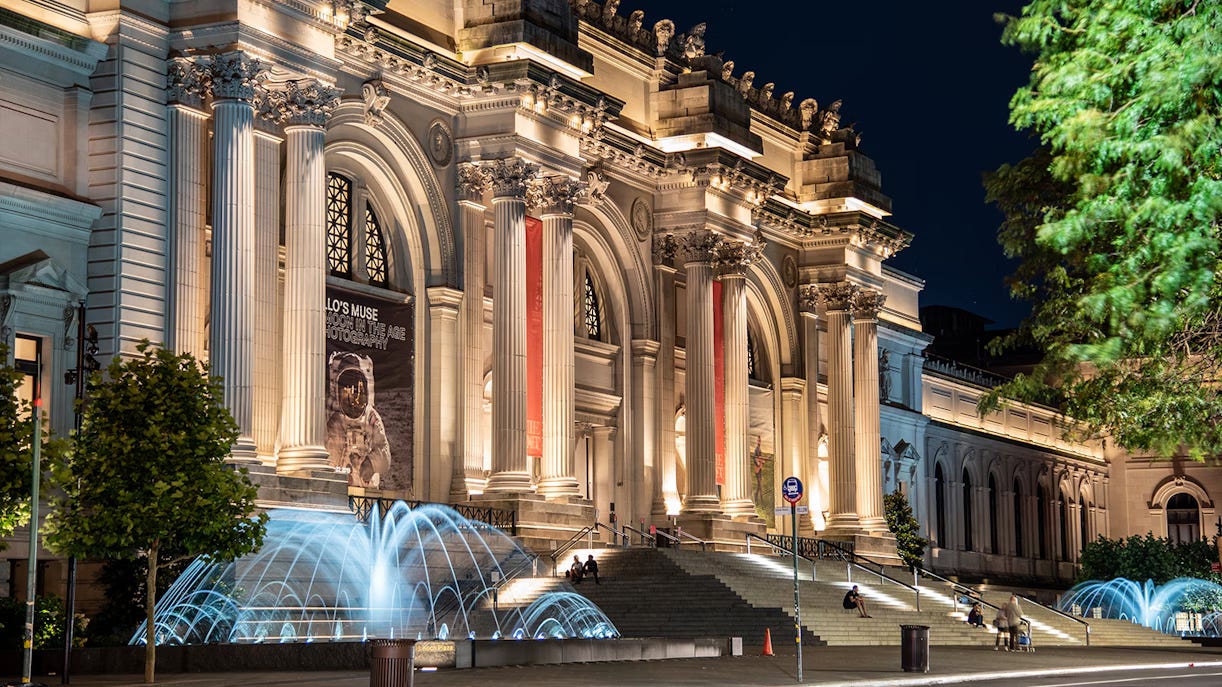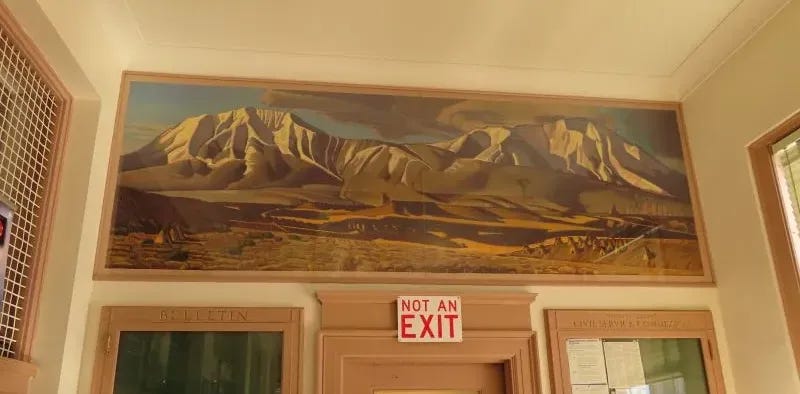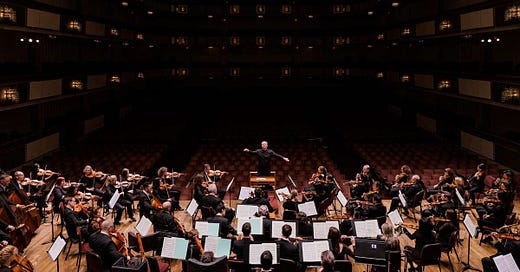A Cultural Reset
The Kennedy Center shake-up signals a shift. Can America’s arts institutions break free from bureaucracy and rediscover their purpose?
Until last week, it was unthinkable that a U.S. president would take direct control of the Kennedy Center, remove its leadership, and install his own picks. Now that it has happened, two questions follow. Will this model of reform extend beyond a single institution? And what should these institutions actually stand for?
The first remains unclear. The second has been ignored for too long.
The Kennedy Center was created to be the nation’s premier cultural institution, a stage for the highest achievements in music, dance, and theater. It was never meant to chase trends or act as a revolving display of the moment’s fashions. A national cultural center carries a responsibility beyond mere entertainment or self-expression. It should elevate and inspire.
That mission has been abandoned. The failure is not confined to the Kennedy Center but extends across the entire arts bureaucracy—from the National Endowment for the Arts (NEA) and National Endowment for the Humanities (NEH) to the Institute of Museum and Library Services (IMLS), the Smithsonian Institution, and the National Gallery of Art (NGA). Public patronage has become a bureaucratic tool, rewarding ideological compliance rather than artistic achievement. These institutions still hold immense power. If they are to remain, they must be restored to their original purpose.
The Power to Reform
Replacing leadership at the Kennedy Center was a first step, but no single institution defines the state of the arts. The NEA, NEH, IMLS, NGA, Smithsonian, and Corporation for Public Broadcasting (CPB) shape the cultural landscape. If these agencies remain unchanged, the failures of the past will continue.
New appointees should not mistake a title for real authority. The full power of an agency lies with entrenched staff, advisory panels, and funding boards that have controlled arts funding for decades, directing resources toward those who reinforce their worldview. Without structural change, new leadership will be little more than a formality.
Those stepping into leadership roles must act decisively. They need both the authority and the will to remove obstructionist staff, replace advisory panels that serve as ideological gatekeepers, and ensure that public funding supports the arts over activism. If they hesitate, they will be absorbed into the system they were meant to reform.
For too long, the arts bureaucracy has assumed leadership changes will not disrupt its inner workings. That assumption must end.
Restoring Standards in Public Patronage
This grip on the bureaucracy has turned arts funding into political currency. The National Council on the Arts, which advises the NEA, is packed with Democrat holdovers whose terms expired years ago. The National Council on the Humanities, which serves the same role for the NEH, operates in a similar way. The Smithsonian’s Board of Regents is controlled by major Democrat donors who use their influence to steer acquisitions and programming. With dozens of replaceable seats across these agencies, new oversight can reset their direction and restore their purpose.
For years, grant review panels have acted as ideological gatekeepers, shaping arts funding long before decisions reach top leadership. They favor political messaging over artistic achievement, ensuring support flows to the same institutions, the same voices, and the same narratives. The result is a bureaucracy that sustains itself instead of cultivating great art. Overhauling these panels is essential, with jurors selected for their understanding of artistic excellence and their recognition of American culture as something to be cultivated.

Federal money has also flowed to the same institutions for decades, rewarding influence over artistic excellence. The Boston Symphony Orchestra has received $1.5 million in federal grants over the past ten years. The Metropolitan Museum of Art, despite holding one of the world’s largest endowments, has taken in $3.5 million. These organizations would thrive without government support, yet they receive millions while smaller institutions compete for scraps.
Shifting money from large institutions to small ones will not solve the problem if the same cultural pressures remain in place. Patronage should push artistic ambition forward, ensuring that public support fosters creativity instead of reinforcing ideological trends. If public funding is to continue, it should be dedicated to work that lasts.
An American Vision for the Arts
Great American art has always been rooted in place, history, and civic life. The murals of the New Deal, the neoclassical architecture of Washington, D.C., and the folk traditions that became blues, jazz, and country grew from a culture that saw art as both inheritance and achievement. These works preserved stories, honored craftsmanship, and gave form to the struggles and triumphs of the people who created them.
Art is at its best when it belongs to a people and a place. The works that endure speak to something real because they are drawn from the substance of life rather than imposed theories. American art has always reflected the landscapes, traditions, and aspirations of the nation, from the grandeur of the Hudson River School to the harmonies of Appalachian ballads. It has thrived in the hands of those who understood that beauty is not a luxury but a necessity.

That legacy should continue to grow. Museums should collect and display work for its craft and cultural significance. Theaters and concert halls should present the highest level of performance, elevating excellence over passing trends. Public commissions should produce works with lasting value, engaging with history, place, and tradition to deepen civic and cultural identity.
A nation’s artistic institutions should serve something larger than themselves. They should remind us of who we are, where we have been, and what is worth preserving.
A Moment for Courage
This is a rare opportunity. For the first time in decades, there is a real chance to reshape the arts in a way that values artistic vision over political trends. That window will not stay open forever.
Public patronage can be a foundation for an artistic renewal, one that nurtures talent, restores high standards, and revives the arts as a force in American life. The old networks will continue funding the same ideological projects they always have. Let them. Public support should provide offer something greater.
The Kennedy Center’s transformation is only the beginning. The arts establishment will resist change, as it always does. That much is expected. But change is coming, whether they acknowledge it or not. What happens next will determine whether this moment leads to a true transformation or another wasted opportunity.
This is the third in a four-part series on how power, politics, and patronage shape American art. From the Cold War to the present, arts funding has dictated which styles thrive, which artists rise, and how institutions define cultural value. The final installment, The Architecture of Cultural Renewal, lays out a vision for what must be built next, outlining a framework for sustaining artistic excellence and institutional independence in the years ahead.
Read part two in the series, Public Art Captured.





Looks like Theatre Communications Group (TCG) is holding a webinar tomorrow (2/19) about responding to (resisting?) the changes. Notably they intend to “Introduce a framework for taking and assessing risks in arts advocacy at individual, organizational, and national levels… “ https://mailchi.mp/098cdfb279cc/tomorrow-arts-advocacy-2025-whats-next-what-now?e=b0be2320f9